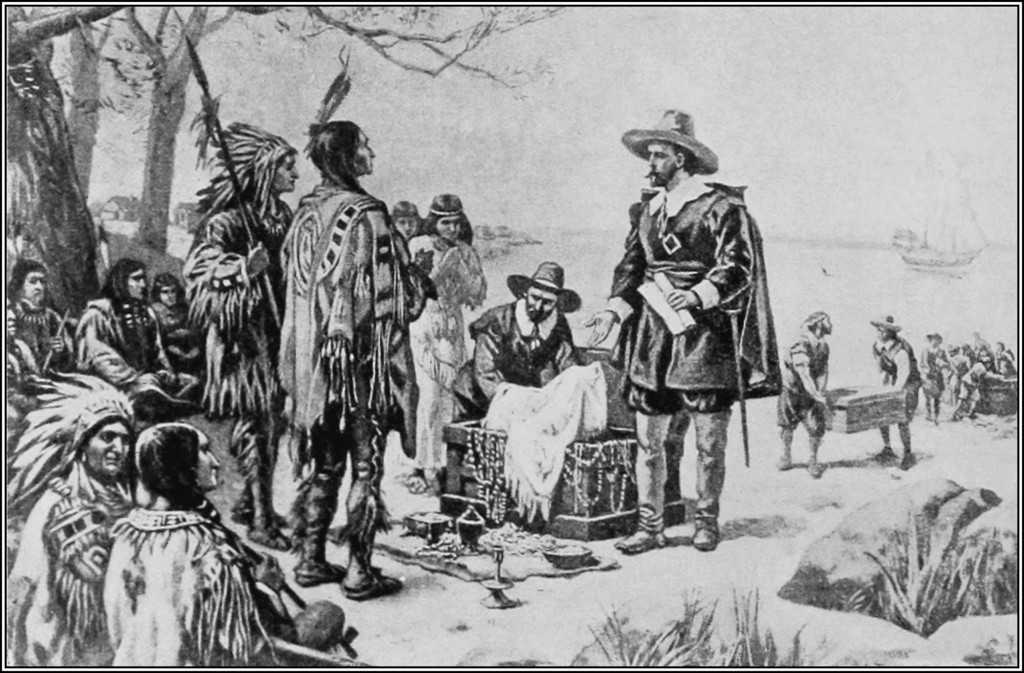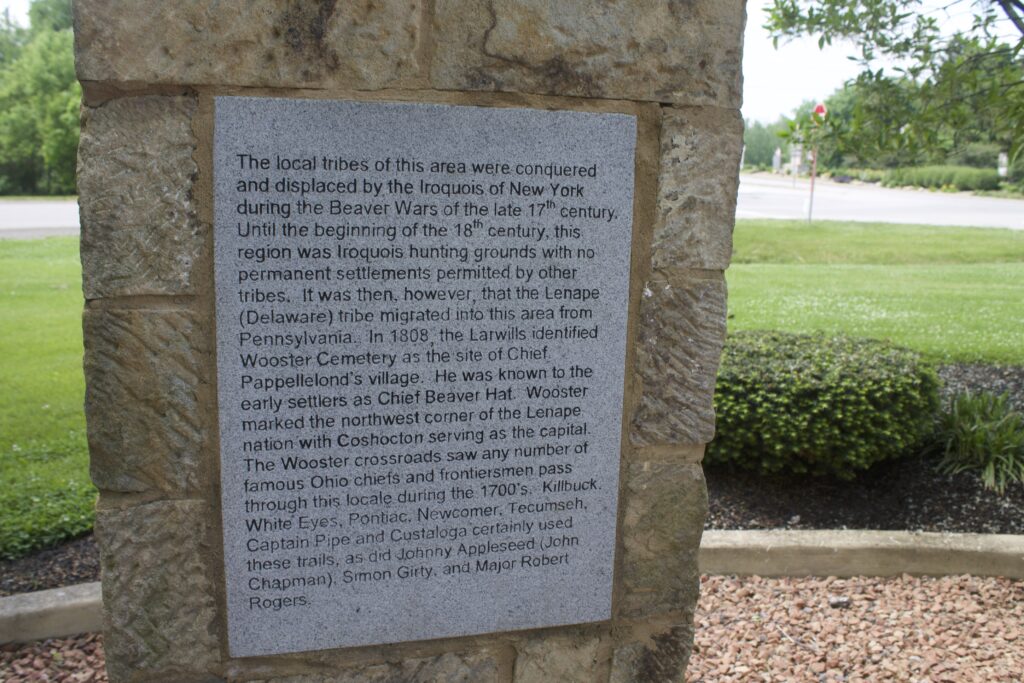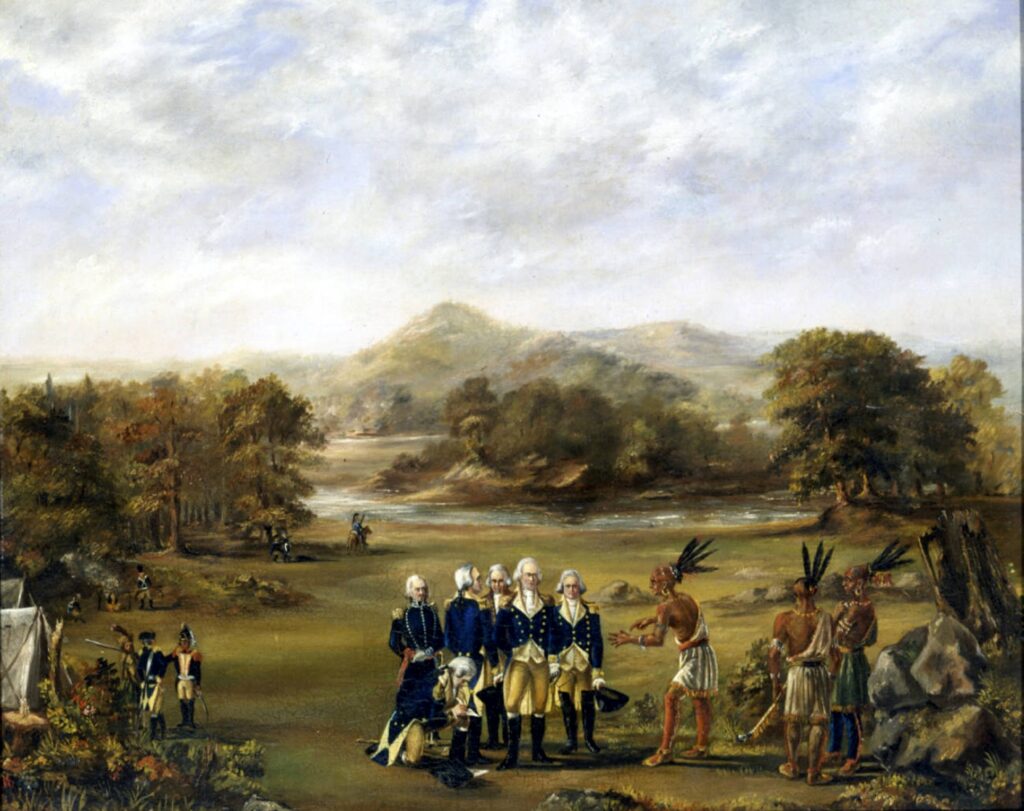Many Native American tribes were living in Ohio during the European contact era. Some speculate they were the descendants of the pre-contact tribes, while others say they migrated to Ohio. However, disputes between the tribes and Europeans over land rights often resulted in conflict, removal, and even bloodshed.
From the seventeenth century to the mid-nineteenth century, the three tribes that occupied Wayne County and its surrounding areas were the Lenape, the Shawnee, and the Wyandotte (WCPL wiki). Although there were many similarities among the tribes, each was distinct and had its own beliefs and way of life. Eventually, they were pushed out West by European settlers and as a result, their history is largely unknown to Ohio’s current residents.
From East to West
The Delaware and Shawnee originally lived on the East Coast, but were forced out by white settlers moving west. The Delaware occupied what is now Manhattan Island (called Manahatta Island by the Delaware) until it was bought by the Dutch in 1622.1Colleen Connolly, “The True Native New Yorkers Can Never Truly Reclaim Their Homeland.” Smithsonian Magazine. Smithsonian Institution, October 5, 2018. In the early 1600s, fighting between the French, Dutch, British, and Native Americans during the Beaver Wars and diseases from Europe decimated Ohio’s indigenous population. By the mid 1700s however, the Delaware and Shawnee, attracted by Ohio’s fertile land and temperate climate, settled here from the East Coast. Other tribes arrived as refugees from the Beaver Wars.2 Kern, Kevin F., and Wilson, Gregory S.. 2013. Ohio : A History of the Buckeye State. Somerset: John Wiley & Sons, Incorporated. Accessed May 21, 2021. ProQuest Ebook Central, 55 There is some speculation that the Shawnee are descendants of the Fort Ancient culture, as they have some cultural similarities.3 Robert A. Cook, CONTINUITY AND CHANGE IN THE NATIVE AMERICAN VILLAGE: Multicultural Origins and Descendants… of the Fort Ancient Culture. S.l.: CAMBRIDGE UNIV PRESS, 2021, 19. The Wyandotte, on the other hand, were a part of the larger Huron tribe (Wyandotte is their British name), and occupied the area surrounding Detroit, Michigan.4 R. Douglas Hurt, The Ohio Frontier: Crucible of the Old Northwest, 1720–1830. Bloomington; Indianapolis: Indiana University Press, 1996. Accessed May 19, 2021. doi:10.2307/j.ctt1zxz1gb.4.,14). Here, they traded with the French and the British. The British built a block house at the Wyandotte settlement in Sandusky to get the Wyandotte people to move closer to their trade outposts, mainly to ensure British control of the fur trading in the area, facilitating trade and providing protection to the British traders.5Hurt, 14 By the 1750s, the Wyandotte were allied with the British and established towns along the Tuscarawas and Muskingum Rivers in Ohio, as well as in the Sandusky area.6 Hurt, 15
Lenape, Shawnee, and Wyandot Culture
The three tribes that settled in this area each had their own rich cultural traditions though at some points these cultures intersected All of these groups relied mostly on hunting and farming; men largely hunted while women oversaw farming. All three of the tribes were active in trading with the British and French, which led to conflicts like the Anglo-French Indian war. 7 Kern & Wilson The political systems of the three tribes were all highly complex, and women were often involved in all parts of the decision-making process, especially in the Wyandotte and Shawnee systems.8Powell, J. W. “Wyandotte Government: A Short Study of Tribal Society.” First Annual Report of the Bureau of Ethnology to the Secretary of the Smithsonian Institution 1879-80. Washington: GPO, 1881, 57-69. These tribes often also had subgroups within their political systems. The Shawnee for instance had five groups- Chillicothe, Kispogogi, Mequachake, Piqua, Hathawekela.9Hurt, 27. The Lenape had three different clans- wolf, turkey, and turtle clans, with each having a clan chief.10“Removal History of the Delaware Tribe.” Official Site of the Delaware Tribe of Indians, 2021. Each tribe had different traditional stories to explain the world around them. According to Wyandotte folklore, a little turtle made the sun and the moon, and the stars were their children, after the land had been made on a large turtle’s back. By migrating to Ohio, the Shawnee, the Lenape, and the Wyandot people brought these traditions and their culture into this land and enriched the history of Wooster and Wayne County.
European Encounters
When the Europeans first set foot in Ohio in 1663, conflict quickly arose between them and the Indian tribes. The first major battle was the Ohio Indian wars, occurring from 1790-1795, with the Battle of Fallen Timbers being the last stage in 1794. The first major treaty was The Greenville Treaty, signed by General Anthony Wayne and the Indian chiefs following the war. The tribes had to give up much of their land and water in exchange for an annual sum provided by the government, and prisoners from both sides of the war were freed.11 “The Treaty of Greenville 1795”. Avalon Project. Accessed May 23, 2021. These were early European attempts to force trade and access tribal land through treaties and wars, and these would not be their last. Another treaty called the Treaty of Fort Industry took place in 1805, where the Indians in the western reserve gave up their lands west of the Cuyahoga River and south of the Greenville treaty line.12Hurt, 316 As for Wayne County, the only known rift between the Indian tribes and the white settlers occurred in 1808, called the Beaver Hat Town massacre. According to white accounts of the violence, a group of Native Americans coming from the Sandusky area attacked a settlement near Pittsburgh, though their motivations are unknown.13Paul Kaufman, Indian Lore of the Muskingum Waters of Ohio,180 After hearing word of this, Captain Fulkes led 30 men after them, and on the site where South Bever Street meets Madison Avenue, his men killed an entire camp of 16 Native Americans.14Kauffman, 181
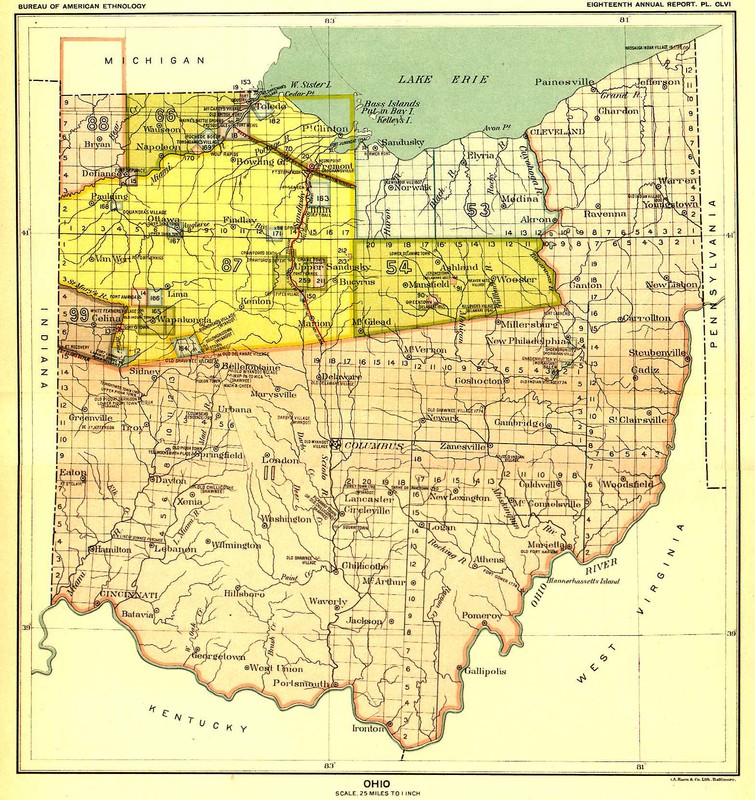
The Treaty of Fort Industry
Learn how the United States government acquired the state of Ohio and forced Indigenous people out in the process.
Indigenous Removal
With the stroke of a pen, the signing of the Treaty of Greenville forced the Wyandotte, Shawnee, and Delaware off their lands starting in 1795. Although the last Native Americans left Ohio about 185 years ago, their removal still impacts their quality of life today. The mass exodus of the Lenape began in the mid-1700s as they were forced to sell their land and were pushed west and north. They wound up in Ontario, Wisconsin, and Oklahoma, where the largest group settled as part of the Cherokee nation in the eastern part of Oklahoma in 1868. Other members of the Lenape went to Indiana to join a small group who already occupied the land.15“Official Site of the Delaware Tribe of Indians » Removal History of the Delaware Tribe.” The U.S. government forced the Shawnee to surrender their land and be placed in reservations with the Treaty of Fort Meigs in 1812. In 1831, they signed a separate treaty with the government and moved to Oklahoma. In 1854, the US government reduced the Kansas Reservation to 160,000 acres. This, coupled with the brutal abuses perpetrated against them by white settlers during the Civil War period, forced the Kansas Shawnees to relocate to Cherokee Nation in northeastern Oklahoma.16“History – The Shawnee Tribe”The Wyandot Treaty of 1842 forced the Wyandotte to give up their territory in exchange for land west of the Mississippi river, an annuity of $17500, and $10000 to pay for their removal 17Hurt, 2.
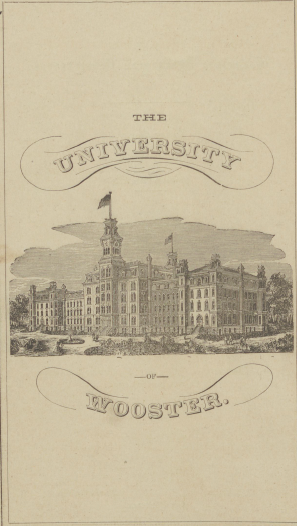
The Creek Nation at the College of Wooster
Learn about the indigenous students who came to the College of Wooster in the 1870s.
The Wyandotte, Shawnee, and Delaware Today
In the aftermath of their removal, the Shawnee, Wyandotte, and Delaware tribes still advocate for justice and recognition. Today, the Wyandotte live in Oklahoma after being pushed further west throughout the 1800s. In the twentieth century, the Wyandotte tribe struggled to keep their heritage alive and fought with the government on territorial issues. Today, they have a stronger base of membership and focus on educating their youth on cultural traditions.18Divine, Lloyd. “A Brief Profile.” Wyandotte Nation. The Wyandotte Nation. Accessed June 28, 2021.The Shawnee similarly settled in Oklahoma, and in the 1980s, they began the process of separating themselves from the Cherokee Nation. These efforts culminated in 2000, when Congress enacted Public Law 106-568, the Shawnee Tribe Status Act of 2000, which restored the Shawnee Tribe as a sovereign Indian nation.19“Shawnee of Oklahoma”, 2017.
In 2018, the United States granted the Shawnee Tribe land in Oklahoma after not having tribally designated land for over a century. However, not every tribe from Ohio was able to keep their tribal status intact. The Delaware tribe is still not a federally recognized tribe today, despite having a rich history in Wooster and Ohio. Because they do not have legal recognition, they experience limitations on religious freedom, educational rights, and the right to rebury their ancestors. 20 “Recognition.” Native American Heritage Programs, September 8, 2013.. While each of these tribes has dealt with the trauma of removal in diverse ways, they still fight to preserve their nationhood, their culture, and their identity, as well as the connection to their past in Ohio.
Recognition of Indigenous People in Wayne County
Wayne County is working to reflect on and rectify its indigenous past. On October 14, 2019, the College of Wooster’s Committee on Indigeneity presented their official statement on land acknowledgement. In this statement, they reinstated their commitment to diversity and inclusion, which includes learning more about Wooster’s indigenous history, supporting indigenous students, and dispelling harmful stereotypes.21College of Wooster Faculty meeting minutes, October 14, 2019 Since then, this statement has been an important part of several events and communications at the College. For example, in the College’s official Earth Day statement, College of Wooster President Sarah Bolton writes,
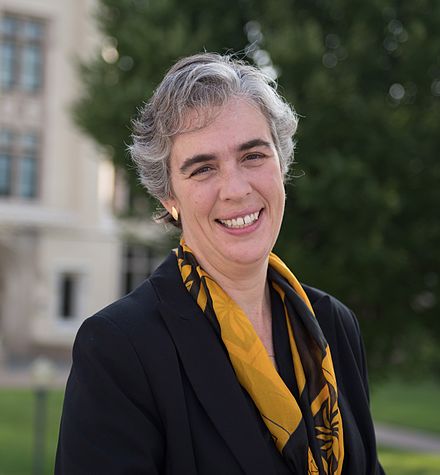
“For over 10,000 years, many native communities have moved through and cared for the land the College of Wooster stands on today. The name “Ohio” derives from the Haudenosaunee language, referring to their name for the Ohio River, Ohiyo, which means “great river” or “beautiful river.” Indigenous narratives and experiences are part of this collective history and are central to our understanding of the indigenous-settler dynamic that has and continues to shape this country’s history, culture, and land we occupy… By acknowledging these complex and sometimes painful histories that give us the opportunity to be here today, they also call us to learn more about this community, build relationships with our local indigenous communities, learn how to better care for the land we inhabit, and to show respect to the diverse peoples and cultures who preceded us and those who come together now in this place.”
In the city of Wooster, residents have led efforts to acknowledge wrongdoings and educate about the history of Indigenous people in the United States. Wooster Daily Record columnist Bev Theil wrote an opinion piece in 2020 highlighting the need for critical education on indigenous history in light of Native American History Month. Theil writes,

“Why this column? Because the world is an increasingly smaller place. Because we need to understand one another. Because all people love their children and want the best for them”
As a community, coming to terms with the responsibility for indigenous removal may take generations, but it is necessary work to bring us and our indigenous neighbors closer to a place of understanding and justice.
For Further Reading
1) Kern, Kevin F., and Wilson, Gregory S.. 2013. Ohio : A History of the Buckeye State. Somerset: John Wiley & Sons, Incorporated. Accessed May 21, 2021. ProQuest Ebook Central.
2) Cook, Robert A. CONTINUITY AND CHANGE IN THE NATIVE AMERICAN VILLAGE: Multicultural Origins and Descendants… of the Fort Ancient Culture. S.l.: CAMBRIDGE UNIV PRESS, 2021.
3) Michael, Fred. “History, Condition and Proposal for Preservation of an Important Archaeological Site,” 2016.
4) “Hopewell Culture.” Hopewell Culture – Ohio History Central. Ohio History Connection. Accessed May 27, 2021. https://ohiohistorycentral.org/w/Hopewell_Culture.
5) “Late Prehistoric Period – The Fort Ancient Culture · The Moundbuilders’ Art: A Confluence of “Ingenuity, Industry, and Elegance” · Open Virtual Worlds.
6) Knepper, George. Ohio and Its People. 3rd ed. Kent, Ohio: Kent State University Press, 2003 https://ebookcentral.proquest.com/lib/wooster/reader.action?docID=4403606.
7) “Mound Builders: Why Did They Disappear from Ohio?” http://touringohio.com/history/mound-builders-disappear.html.Accessed 4 June 2021.
8) Finn, John. “Interdisciplinary Collaboration Sheds New Light on the Mounds of Pee Wee Hollow.” The College of Wooter, February 28, 2014. https://www.wooster.edu/offices/marketing/news-archive/2014/february/peeweehollow-mounds/index.php.
9) Kardulias, Nick, David Taggart, Brittany Rancour, Nigel Brush, Roger Rowe, and Gregory Wiles. “A Small Prehistoric Mound Group (33-WE-3) In Wayne County, Northeast Ohio.” Pennsylvania Archeologist 84 (2014): 62–75.
10) Mills, William C. Archeological Atlas of Ohio, 1914.
11) Virtual First Ohioans. http://lostworlds.org/virtual-ohioans/,
Accessed 23 May 2021.
